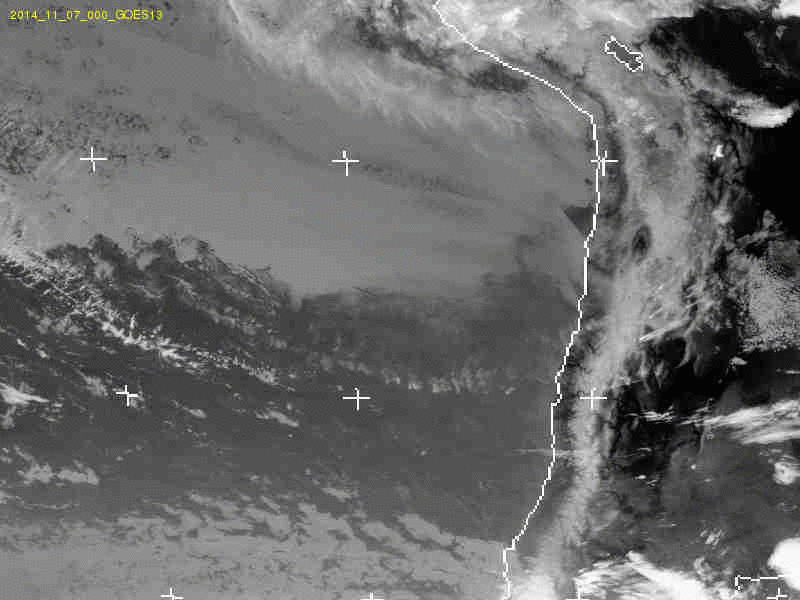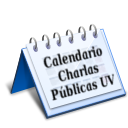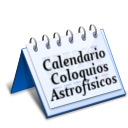Julio 13, 2016. Noticia IFA
 En una hermosa ceremonia se inauguró la Exposición "El Universo como Máquina del Tiempo" en la Escuela Naval de Valparaíso, ubicada en Playa Ancha, con la presencia del Capitán de Navío y Director de la Escuela Naval, Sr. Claudio Yáñez, el Rector de la U. de Valparaíso, Sr. Aldo Valle, el Director del Instituto de Física y Astronomía, Sr. José Viilanueva, el autor intelectual de esta iniciativa Dr. Nikolaus Vogt, y la asistencia de otros directivos, alumnos y personal de la Escuela Naval. En la ceremonia el Sr. Aldo Valle agradeció muy especialmente al Dr. Vogt, por esta iniciativa y muchas otras desarrolladas en favor de una generosa difusión de la ciencia astronómica.
En una hermosa ceremonia se inauguró la Exposición "El Universo como Máquina del Tiempo" en la Escuela Naval de Valparaíso, ubicada en Playa Ancha, con la presencia del Capitán de Navío y Director de la Escuela Naval, Sr. Claudio Yáñez, el Rector de la U. de Valparaíso, Sr. Aldo Valle, el Director del Instituto de Física y Astronomía, Sr. José Viilanueva, el autor intelectual de esta iniciativa Dr. Nikolaus Vogt, y la asistencia de otros directivos, alumnos y personal de la Escuela Naval. En la ceremonia el Sr. Aldo Valle agradeció muy especialmente al Dr. Vogt, por esta iniciativa y muchas otras desarrolladas en favor de una generosa difusión de la ciencia astronómica. 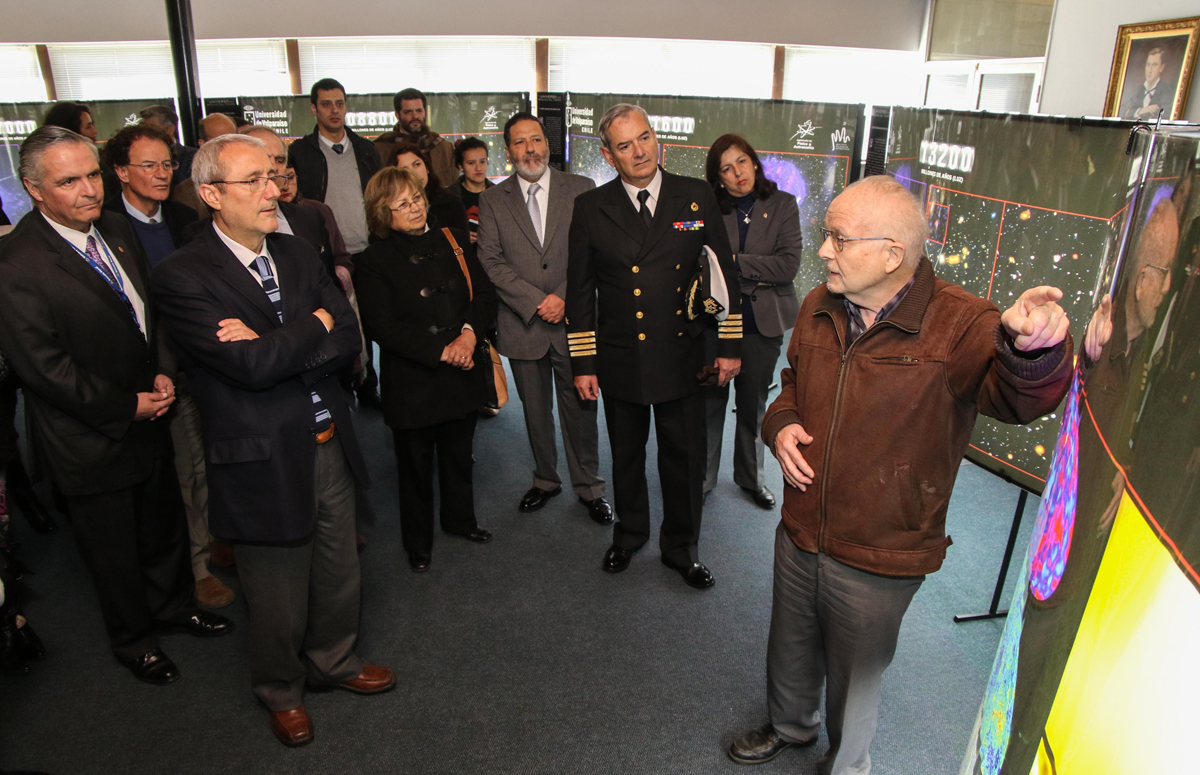 La intervención del Dr. Villanueva relató los orígenes del Instituto de Física y su dinámico caminar hacia la promesa segura de una presencia cada vez mas fuerte en la V Región y en Chile, en lo académico y en la difusión de la astronomía. La Exposición, que muestra 11 paneles con 22 láminas iluminada por detrás y que relatan la historia del Universo con representaciones artísticas e imágenes reales de la Vía Láctea, objetos estelares y extragalácticos, como también imágenes icónicas de nuestro planeta, permanecerá abierta al público en ese lugar hasta el 21 de Julio. Imágenes: el Dr. Villanueva se dirige a los presentes; el Dr. Vogt hace un tour de cada panel para explicar sus contenidos, bajo la atenta e interesada mirada del Sr. Aldo Valle, el Sr. Claudio Yáñez y otros miembros de la Escuela Naval. La Exposición puede ser solicitado para su Institución Cultural o Colegio contactando al Centro de Extensión de la U. de Valparaíso (ver enlace mas abajo)
La intervención del Dr. Villanueva relató los orígenes del Instituto de Física y su dinámico caminar hacia la promesa segura de una presencia cada vez mas fuerte en la V Región y en Chile, en lo académico y en la difusión de la astronomía. La Exposición, que muestra 11 paneles con 22 láminas iluminada por detrás y que relatan la historia del Universo con representaciones artísticas e imágenes reales de la Vía Láctea, objetos estelares y extragalácticos, como también imágenes icónicas de nuestro planeta, permanecerá abierta al público en ese lugar hasta el 21 de Julio. Imágenes: el Dr. Villanueva se dirige a los presentes; el Dr. Vogt hace un tour de cada panel para explicar sus contenidos, bajo la atenta e interesada mirada del Sr. Aldo Valle, el Sr. Claudio Yáñez y otros miembros de la Escuela Naval. La Exposición puede ser solicitado para su Institución Cultural o Colegio contactando al Centro de Extensión de la U. de Valparaíso (ver enlace mas abajo)
Enlaces asociados: Noticia en El Mercurio - Exposición itinerante "El Universo como Máquina del Tiempo" (y cómo solicitarlo para su Institución u Organización)
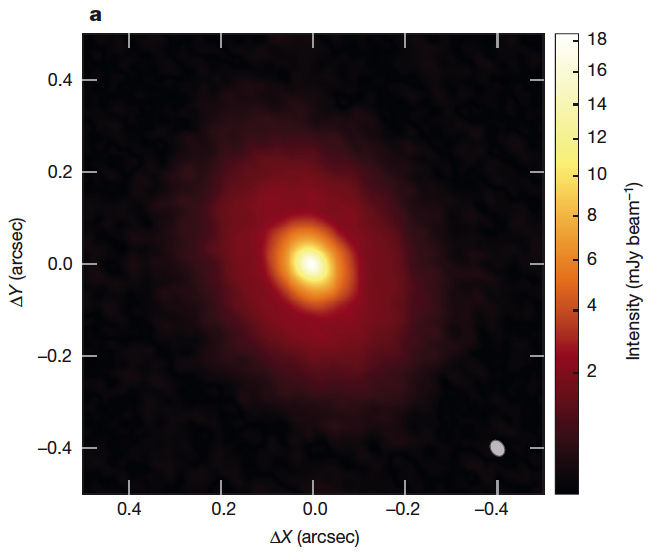 July 14, 2016. IFA News.
July 14, 2016. IFA News.
Prestigious NATURE published yesterday (July 14, 2016) an important discovery for the development of proto plnanetary discs and planet formation. The results belong to a study in which Claudio Cáceres, Héctor Cánovas y Matthías Schreiber, members of the Instituto de Física y Astronomía, IFA, participated. A snow-line is the region of a proto planetary disk at which a major volatile, such as water or carbon monoxide, reaches its condensation temperature. Snow-lines play a crucial role in disk evolution by promoting the rapid growth of ice-covered grains. Signatures of the carbon monoxide snow-line (at temperatures of around 20 kelvin) have recently been imaged in the disks surrounding the pre-main-sequence stars TW Hydra and HD163296, at distances of about 30 astronomical units (AU) from the star. But the water snow-line of a protoplanetary disk (at temperatures of more than 100 kelvin) has not hitherto been seen, as it generally lies very close to the star (less than 5 AU away for solar-type stars). Water-ice is important because it regulates the efficiency of dust and planetesimal coagulation, and the formation of comets, ice giants and the cores of gas giants. Here we report images at 0.03-arcsec resolution (12 AU) of the protoplanetary disk around V883 Ori, a protostar of 1.3 solar masses that is undergoing an outburst in luminosity arising from a temporary increase in the accretion rate. We find an intensity break corresponding to an abrupt change in the optical depth at about 42 AU, where the elevated disk temperature approaches the condensation point of water, from which we conclude that the outburst has moved the water snow-line. The spectral behaviour across the snow-line confirms recent model predictions: dust fragmentation and the inhibition of grain growth at higher temperatures results in soaring grain number densities and optical depths. As most planetary systems are expected to experience outbursts caused by accretion during their formation, our results imply that highly dynamical water snow-lines must be considered when developing models of disk evolution and planet formation. Image: credits Nature Magazine.
Associated link: Nature Magazine : Imaging the water snow-line during a protostellar outburst, .pdf file
July 13, 2016. IFA News
 An international work group, amongst which are three IFA collaborators, published a few hours ago an article which is an ESO Press Release: ESO’s HAWK-I infrared instrument on the Very Large Telescope (VLT) in Chile has been used to peer deeper into the heart of Orion Nebula than ever before. The spectacular picture reveals about ten times as many brown dwarfs and isolated planetary-mass objects than were previously known. This discovery poses challenges for the widely accepted scenario for Orion’s star formation history. The Principal investigator of the team iHolger Drass (Astronomy Institute, Ruhr University of Bochum, Germany; Pontificia Universidad Católica de Chile, Santiago, Chile), and co-aouthors Amelia Bayo, Nicolás Godoy and Nikolaus Vogt, these last three from IFA, form part of that international team. Amelia Bayo explains why this is important: "Understanding how many low-mass objects are found in the Orion Nebula is very important to constrain current theories of star formation. We now realise that the way these very low-mass objects form depends on their environment." Image: A deep infrared view of the Orion Nebula from HAWK-I, credits, ESO.
An international work group, amongst which are three IFA collaborators, published a few hours ago an article which is an ESO Press Release: ESO’s HAWK-I infrared instrument on the Very Large Telescope (VLT) in Chile has been used to peer deeper into the heart of Orion Nebula than ever before. The spectacular picture reveals about ten times as many brown dwarfs and isolated planetary-mass objects than were previously known. This discovery poses challenges for the widely accepted scenario for Orion’s star formation history. The Principal investigator of the team iHolger Drass (Astronomy Institute, Ruhr University of Bochum, Germany; Pontificia Universidad Católica de Chile, Santiago, Chile), and co-aouthors Amelia Bayo, Nicolás Godoy and Nikolaus Vogt, these last three from IFA, form part of that international team. Amelia Bayo explains why this is important: "Understanding how many low-mass objects are found in the Orion Nebula is very important to constrain current theories of star formation. We now realise that the way these very low-mass objects form depends on their environment." Image: A deep infrared view of the Orion Nebula from HAWK-I, credits, ESO.
Associated links: See the complete ESO Press Release, "Deepest Ever Look into Orion" - Scientific Article
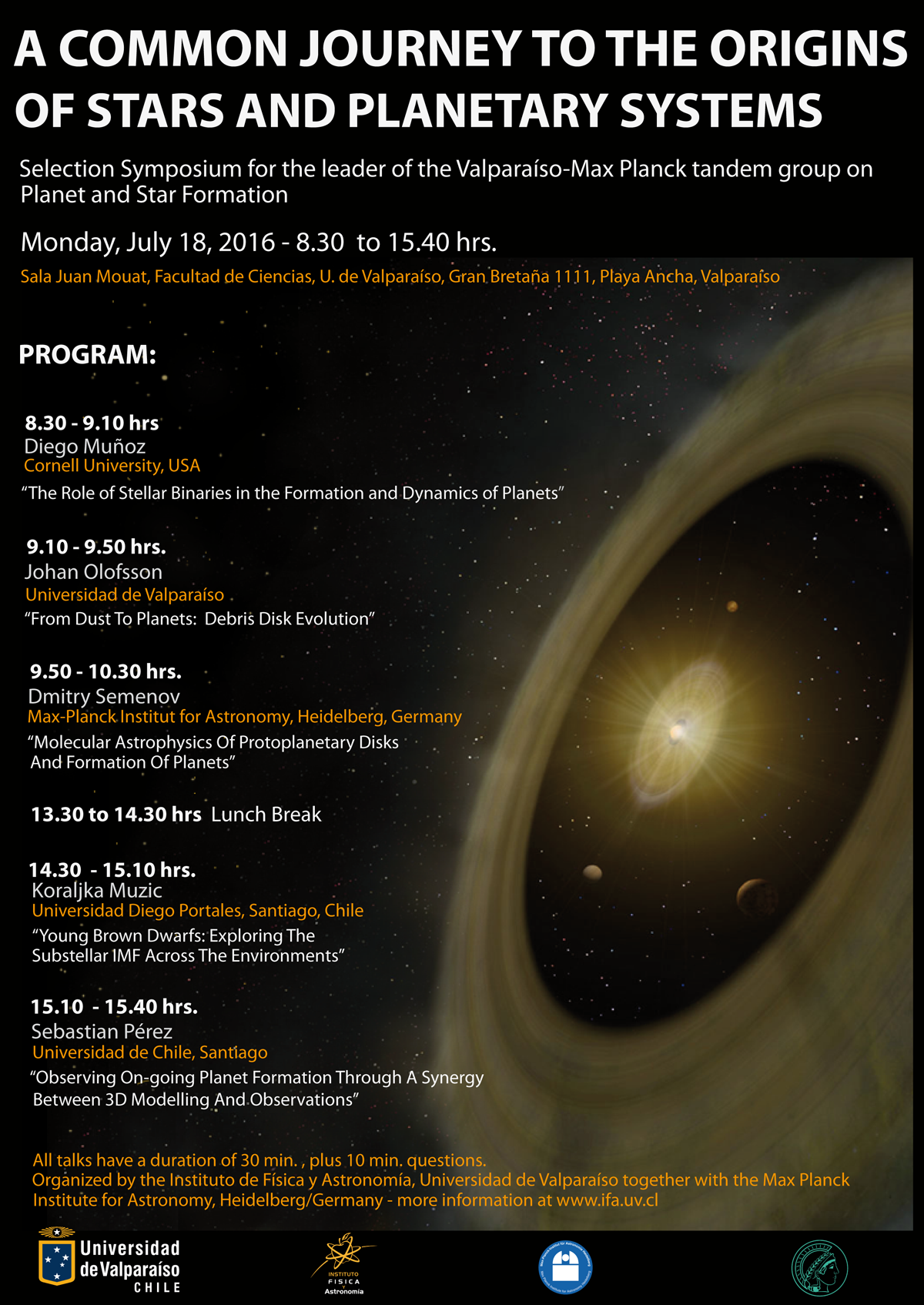 Julio 11, 2016. Noticia IFA
Julio 11, 2016. Noticia IFA
El Instituto de Física y Astronomía, IFA, realizará un Simposio titulado "A Common Journey to the Origins of Stars and Planetary Systems", el dia lunes 18 de Julio próximo en la Sala Juan Mouat de la Facultad de Ciencias entre las 8.30 y 15.40 hrs, con la finalidad de seleccionar a la persona que liderará el "Grupo Max Planck tandem para la Formación de Planetas y Estrellas" de la U. de Valparaíso y el Max Planck Institute de Heidelberg, Alemania. Los candidatos a esta posición son los siguientes: Diego Muñoz (Cornell University, USA), Johan Olofsson (Universidad de Valparaiso), Dmitry Semenov (Max-Planck Institute for Astronomy, Alemania), Koraljka Muzic (Universidad Diego Portales) y Sebastián Pérez (Universidad de Chile), quienes presentarán charlas de 30 minutos cada uno, con 10 minutos para preguntas, en torno a la temática del grupo tandem. El evento, organizado por IFA y el Max-Planck Institute, es de asistencia abierta para todo interesado.
Enlaces asociados: Symposium A Common Journey to the Origins of Stars and Planetary Systems - IFA firma acuerdo con el Instituto Max Planck de Alemania (Octubre 2015)



